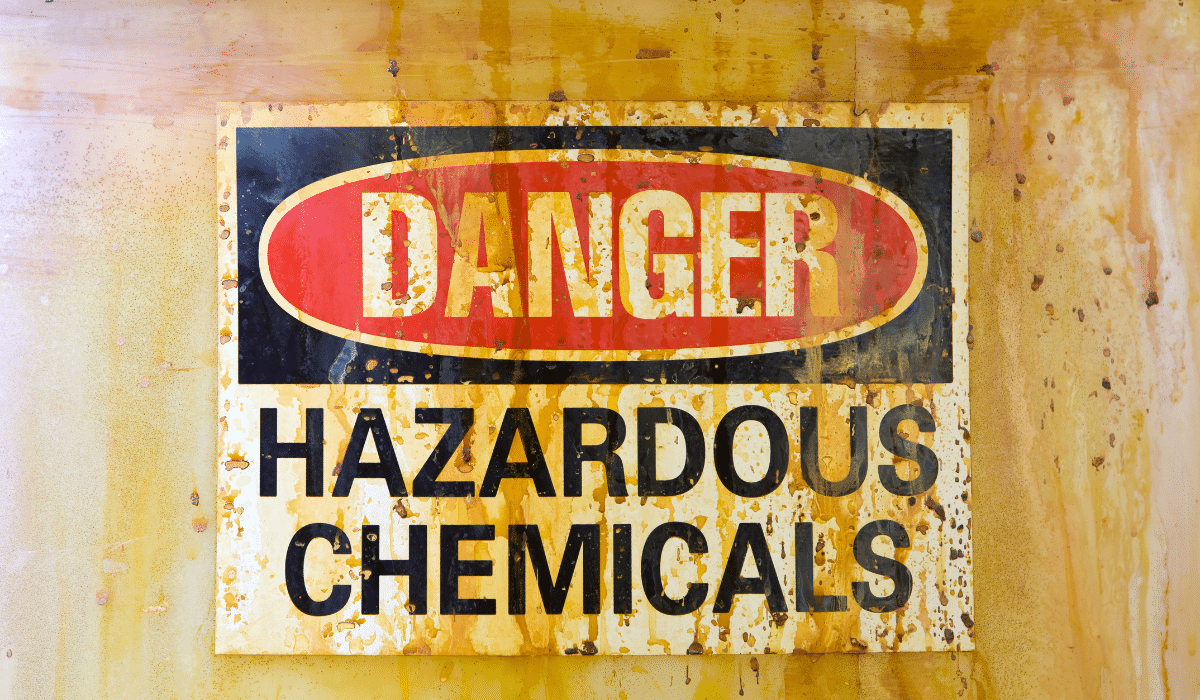Diborane is a chemical compound made up of boron and hydrogen atoms, commonly used in industrial gas manufacturing.
Highly unstable at room temperature, with a sweet odor, this toxic and flammable gas is commonly used in rocket propellants, as a reducing agent, as a rubber vulcanizer, as a catalyst for hydrocarbon polymerization, as a flame-speed accelerator, and as a doping agent.
In May of 2023, a catastrophic explosion of this product at an industrial gas plant in High Springs, FL, resulted in severe injuries to several employees, prompting an OSHA investigation.
Their findings underscore the critical importance of adhering to required operating procedures in industrial gas manufacturing, shedding light on the lapses leading to this tragic incident.
Here, we’ll break down what happened, the results of OSHA’s investigation, and highlight tips on how you can protect your team from Diborane exposure.
Let’s break it down.
Related Article: Chemical Hazards Leave Plant Facing $292K In Fines
Related Article: Tank Cleaning Company Faces $399K in OSHA Penalties

Investigation & Site Inspection of the Gas Manufacturing Plant
The Explosion:
The aftermath of the explosion at the industrial gas manufacturing plant prompted investigators to initiate an inspection at the manufacturing site where diborane is produced, distilled, mixed, and transferred.
The investigation revealed that the explosion occurred when a 25-year-old product technician used a heat gun to transfer gas from an aluminum source cylinder to a steel cylinder. Unfortunately, the blast propelled the worker through the building’s wall, causing life-altering injuries, as well as injuring several others.
Injuries and Response:
The severity of the blast resulted in the need to fly the employee to UF Shands Hospital’s trauma center, requiring treatment for brain injuries, third-degree burns, and a leg amputation.
Four additional workers suffered various injuries and received treatment at the hospital.
In addition to the injuries sustained by the employees, first responders involved in the rescue faced chemical burns to their hands and necks, and taken to the UF Shands Hospital Burn Center.
OSHA Citations and Violations
Willful Violation:
Following the investigation, OSHA cited the industrial gas manufacturing company for willfully exposing workers to fire and explosion hazards.
The violation pertains to the use of equipment not intrinsically safe in the presence of flammable chemicals and vapors, highlighting a disregard for essential safety measures.
Serious Violations:
In addition to the willful violation, OSHA identified 12 serious violations for the following;
- Not containing safe upper and lower limits for temperatures, pressures and flows, and thermal and chemical stability data on the process safety information documents.
- Failing to conduct a process hazard analysis to adequately address hazards related to impure or contaminated materials produced in mixing and reaction processes.
- Not retaining and addressing hazard analysis recommendations promptly and tracking resolutions.
- Failing to address requirements for the operating limits specified for cylinder temperatures in written operating procedures.
- Not removing equipment in hazardous locations with ignitable or combustible properties of specific gases, vapors, dust or fibers present.
- Not classifying buildings as process safety management sites properly and documenting that equipment complied with recognized good engineering practices.
Proposed Penalties:
OSHA proposed penalties totaling $201,573, reflecting the gravity of the safety violations discovered during the investigation.
The company has 15 business days from receipt of these citations and penalties to comply, request an informal conference with OSHA, or contest the findings before the independent Occupational Safety and Health Review Commission.
Causes and Lessons Learned
Production vs. Safety Balance:
The tragedy at the gas plant highlights the perilous consequences of prioritizing production over safety.
The company’s drive to enhance productivity at the High Springs facility ultimately led to a failure of the necessary safety measures for the production of diborane, resulting in life-altering consequences for the workforce.
Importance of Compliance:
OSHA Area Office Director Scott Tisdale in Jacksonville, Florida, emphasized that the preventable tragedy serves as a stark reminder of the importance of compliance with safety and health standards mandated by law.
The incident also underscores the critical need to prioritize the well-being of employees over production demands.
Protecting Your Workforce from Diborane Exposure
Storage
- Keep in a cool, dry, dark location in a tightly sealed container or cylinder.
- Keep away from incompatible materials, ignition sources and untrained individuals.
- Secure and label area.
- Protect containers/cylinders from physical damage.
Handling
- Diborane should be considered hazardous, and handled with care.
- Avoid direct physical contact.
- Use appropriate, approved safety equipment.
- Untrained individuals should not handle this chemical or its container.
- Handling should occur in a chemical fume hood.
Protection
- Workers should wear appropriate protective gloves, clothing and goggles.
- Always wear thermal protective clothing when handling refrigerated/cryogenic liquids.
Respirators
- Wear positive pressure self-contained breathing apparatus, also known as an SCBA.
Small spills/leaks
- Always keep sparks, flames, and other sources of ignition away.
- Keep material out of water sources and sewers.
- Attempt to stop leak, only if possible without undue personnel hazard.
- Use water spray to knock-down vapors.
For further information, see CDC’s Medical Management Guidelines for Diborane, or New Jersey Department of Health’s Hazardous Substance Factsheet on Diborane
Key Takeaways
This tragic explosion serves as a stark wake-up call for the industrial sector, emphasizing the critical need for a systematic shift towards prioritizing safety over productivity.
As OSHA’s investigation reveals, preventable tragedies underscore the urgency for companies to instill a culture of compliance, robust safety measures, and an unwavering commitment to the well-being of their workforce.
Hopefully, this incident not only prompts internal reforms at the company involved, but also serves as a broader catalyst for systemic change across the industrial landscape.
About Worksite Medical
In most cases, OSHA requires medical surveillance testing, and at no cost to employees.
Worksite Medical makes that program easier with mobile medical testing.
We conduct on-site respirator fit tests, as well as audiometric exams, pulmonary function tests and heavy metal lab work, right on your job site. We also keep accurate, easy-to-access medical records for your convenience. You’ll keep your employees at work, and stay ahead of OSHA inspections.




